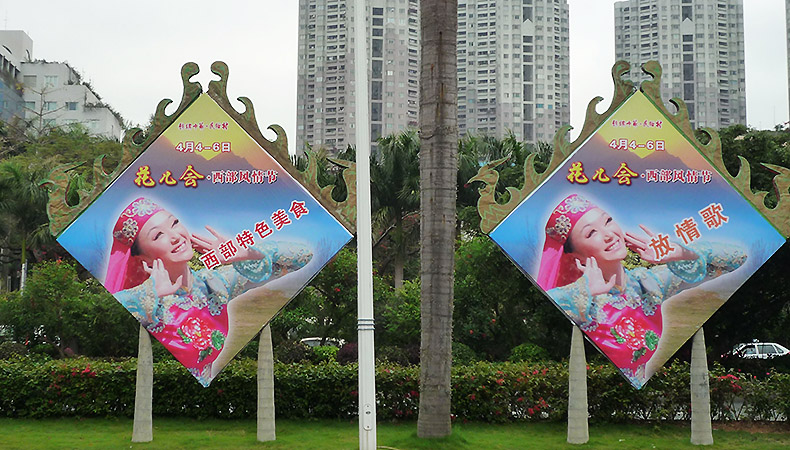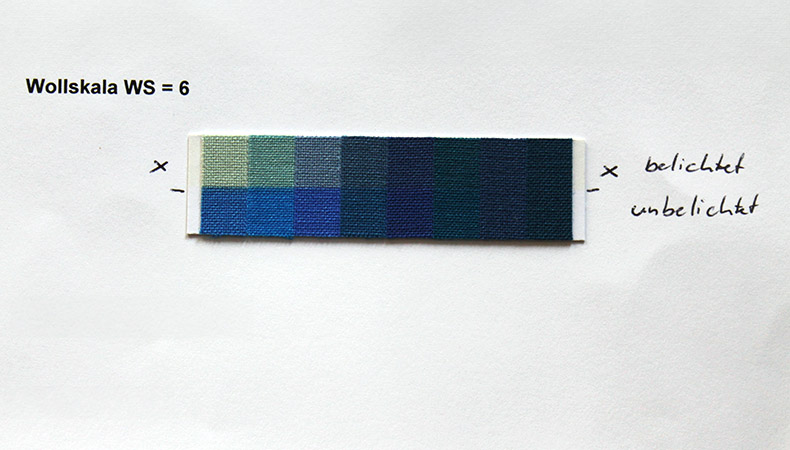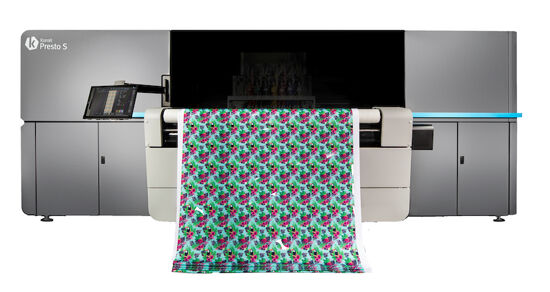How can printers manage the changing outdoor durability of Large Format Print?

Using large format print for outdoor advertising can have challenges regarding to weather conditions for printers and signmakers. Sonja Angerer emphasizes the importance of being aware that extreme weather conditions can have a great impact on the durability of digital outdoor prints in the future.
Digital prints with Eco Solvent and Latex inks last approximately 3 years outdoors. For hard solvent and UV-curing inks, it can last between 3-5 years. Some testing has been carried out using the appropriate laminate or varnish to determine whether applying additional protection can extend the longevity to up to 7 years.
However, these assessments have always failed as outdoor durability of digital prints can mean many things. The key question is regarding the lightfastness of print and print medium: how long does it take for a picture to be perceived as noticeably faded? When does the substrate become yellowish or grey?
There are many other criteria to consider. If a print cracks or bubbles, changes shape or size, falls off or bonds inseparably with the substrate, then most clients will likely describe it as "broken". Depending on the combination of materials, this can happen long after the print itself has faded or much earlier. Material testing is therefore checking for "weather fastness".
-1.jpg) Caption: In weathering stations such as here in Wustrow, digital prints can be tested for their weather resistance under actual outdoor conditions. Image Credit: Killer queen1 - Own work, CC BY-SA 3.0
Caption: In weathering stations such as here in Wustrow, digital prints can be tested for their weather resistance under actual outdoor conditions. Image Credit: Killer queen1 - Own work, CC BY-SA 3.0
Climate and Large Format Print
Since digital has become the predominant printing technology, there has been much less discussion about the durability of the inks used. On one hand, this is due to the significant improvements in ink chemistry, so screen printing and offset printing can no longer automatically claim better outdoor durability. On the other hand, the advertising landscape has changed. Company signs are changing more frequently, and even long-term advertising is updated more often. Thus, typically digital prints are dismantled before they have reached the end of their outdoor durability.
However, it is quite possible, that the discussion will be revived in the coming years, as suppliers of printing substrates usually give their outdoor durability estimates for northern or central European climate. Which is, of course, changing.
 Caption: Outdoor durability estimations of digital printing inks and substrates are given for Northern and Central Europe. In other climate zones, outdoor durability can be dramatically different. Image Credit: Sonja Angerer
Caption: Outdoor durability estimations of digital printing inks and substrates are given for Northern and Central Europe. In other climate zones, outdoor durability can be dramatically different. Image Credit: Sonja Angerer
Factors for Large Format Print outdoor durability
The climate in Europe has changed significantly in recent years. According to the German Weather Service, the hours of sunshine in Germany, for example, increased by almost 8% from 1991 to 2020. In addition, there are massive regional differences. The town of Rheinfelden in the far southwest of Baden-Württemberg is the sunniest location in Germany. It has almost 700 more hours of sun on a long-term average than Glücksburg-Meierwik, the least sunny location. Length and intensity of UV radiation in sunlight is a decisive aging factor for prints.
In addition, according to Statista, there is a growing number of strong and extreme weather events. For example, storms, hailstorms, heat waves or severe frost. Mechanical stress also has a strong influence on the durability of digital prints.
Another important factor for durability is the chemicals the print is exposed to. These can be applied cleaning agents, but also air pollutants. The latter have declined in Europe. But in metropolitan areas, the pollution caused by particulate matter is still high. This is very unhealthy for humans and animals, but it also affects digital print outdoor durability.
However, the extent to which a print product is affected by weather influences also depends on the substrate. Papers and cardboard do not last well in moist environments. But cellulose-based substrates and non-woven material withstand dry heat and cold often better than regular plastic, as they shrink and inflate less with temperature.
Banners and films made of PVC are generally considered extremely robust. However, with certain types of new bioplastics, as well as with substrates containing a high amount of recycled raw materials, there is currently no long-term experience about general outdoor durability.
 Caption: The wool scale is considered a standard method for testing the lightfastness of printing inks. Image Credit: Wolljuergen, own work, Copyrighted free use, via Wikimedia Commons
Caption: The wool scale is considered a standard method for testing the lightfastness of printing inks. Image Credit: Wolljuergen, own work, Copyrighted free use, via Wikimedia Commons
Measuring Large Format Print outdoor durability
To be able to determine the outdoor durability of prints, lightfastness of inks is tested against wool scale, also known as the blue wool scale. This method was introduced in the 19th century and only considers the effect of light without the direct influence of weathering. Today, xenon light is used for the test procedure according to DIN 54004. Wool scale 7 and 8 are considered very good lightfastness. If inks have different wool scales (WS), the lowest level always applies to any mixed colours, because the less durable colour will fade faster and thus change the motif.
Manufacturers of films and other substrates determine the weather fastness of their print media by means of weathering tests. In addition to UV, these also take into account influences from humidity, temperature and temperature changes, as well as exhaust fumes, industrial residue and other atmospheric components such as salts.
Weathering tests can be conducted in the field or in a lab. However, in many cases, manufacturers of print media do not specify standards or test scenarios when they classify their substrates into performance levels but refer to "northern and central European conditions". It is therefore not easily possible to quantify the extent to which this already considers the Climate Changes that have occurred within recent decades.
Typical performance levels for outdoor digital printing substrates are short-term (up to approx. 6 months), medium-term (2-3 years) and long-term (5 years or more). Premium films such as Orafol Oracal 852, Avery Dennison SP 1504, Spandex ImagePerfect 2520PA or the 3M IJ180mC series offer an outdoor shelf life of up to 10 years (without print).
Every day Large Format Print outdoor durability
Manufacturers of inks and printing substrates usually only test their own product for outdoor durability. When adding print, varnishing, lamination, glue or adhesive film or laminating and foiling, results may change direction.
Location can also have a massive impact on a print’s outdoor durability: is it mounted horizontally, vertically or at an angle? At a mountain station, jetty or in a shady forest in the lowlands? Is a wrapped vehicle only on the road in Northern and Central Europe? Or does it regularly drive on roads in Southern Europe or around the Mediterranean? Spain and Italy have repeatedly reported temperature records in recent years. We should assume that such weather extremes have not yet been factored in with any estimations of light and weather fastness of digital prints.
This can become a problem for printers, who sometimes must provide extensive warranties when wrapping larger fleets or take on important projects. They then may consider commissioning weathering tests, for example in accordance with DIN EN ISO 4892-2, in certified laboratories.
Alternatively, there are manufacturer's warranty systems such as 3M MCS and Avery ICS. However, they only apply to certain product and ink/ printer combinations. In addition, printers must meet other conditions such as certifications.
How do printers manage the changing outdoor durability of large format print?
Printers and sign makers must expect that higher temperatures, more sunny days, cold spells, heavy rain and storms will have a greater impact on the durability of digital prints outdoors in the future. This may also lead to more orders because print products need to be replaced more frequently.
However, customer complaints are also likely to increase as advertisers are likely to not accept posters or wraps fade faster than usual.
Printers may therefore consult their suppliers but may have to switch to higher-quality films and more durable ink technologies, driving up product prices. At the same time, companies should adapt their terms and conditions and specify more clearly about outdoor durability. It might even be necessary to drop any of these guarantees altogether for now.
To discover the latest content that covers a wide range of sectors including outdoor print, digital print and inks sign up for FESPA’s free monthly newsletter FESPA World available in English, Spanish and German.
Topics
Interested in joining our community?
Enquire today about joining your local FESPA Association or FESPA Direct
Recent news
.png?width=550)
FESPA Middle East 2025 Overall Highlights
It has already been 2 weeks since we opened the doors on the 2nd edition of FESPA Middle East.

How will Fiery simplify print processes and enhance their user experience
In this podcast, Debbie McKeegan interviews Michael Chramtchenko, Chief of Staff, Sales and Marketing at Fiery, discussing the company's innovative software solutions for the print industry, particularly in garment decoration.

What is digital textile printing and what are the opportunities?
Nessan Cleary shares how textile printing covers a wide range of different market sectors which vary in opportunities. Nessan discusses sportswear, direct to garment and home décor.

Vote now for the FESPA Awards’ People’s Choice Award!
The voting for the prestigious People's Choice FESPA Award is now open until 7th February where those in the industry have the opportunity to vote for their favourite entries, celebrating the exceptional talent in the industry.